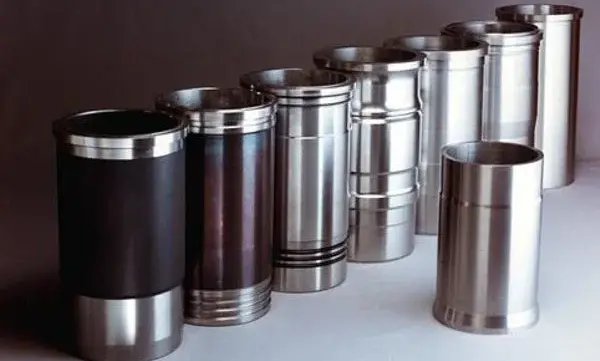Explore Cylinder Liner Types and Their Benefits
You must have heard a lot about cylinder liners but wonder what exactly are they, and what their role is in vehicle engines. With this blog, we will share all the vital deets about it. We will explore the most common liner types and why using liners will be beneficial versus not using them.
Before we begin – let us understand what cylinder liners are. They are also known as cylinder sleeves and engine cylinder sleeves/liners. The cylinder liner fits in the engine block and offers an internal rubbing surface for the piston to compress. They are like bodyguards of the engine. They make sure that it runs smoothly. Let us take it ahead and discover why they are heroes of the engines.
To find out about it – first and foremost, we need to know different types of cylinder liners.
The cylinder liners are like covers for the cylinders in the engine. The best part is that there are different types to choose from! Apart from the dry and wet liners, the other prominent one is the finned liner. Now, don’t be daunted by the liner names, we will make them easy for you.
Wet Liners
Wet liners or coolant liners are a type of cylinder liners used in engines. Imagine them as inner sleeves with a special cooling layer. The engine is kept cool by these liners that contain engine coolant. They work like magic and manage temperatures efficiently. They are often made of steel or cast iron. They fit inside the engine block with a small space between the block and the liners. The coolant flows through this space, thus preventing overheating and keeping the liner cool. Wet liners can bear the heat generated during combustion. Heat gets transferred from the liner to the coolant. Due to this, the combustion chamber can attain high temperatures and thus increase thermal efficiency. So, in the world of cylinder liners, the wet ones act as cool heroes of the engine that keep things chill.
Dry Liners
Unlike Wet Liners – Dry liners do not come in contact with the coolant. They are hollow cylindrical tubes that aptly fit inside the engine block. They are also known as cast-in liners. They are set in place in the block during the casting process. Dry liners are low-maintenance and easily replaceable, thus enhancing engine efficiency. They work silently and efficiently, ensuring smooth engine performance with few difficulties. They are designed to be lightweight and thin and are generally made of aluminum or cast iron. Dry liners can tolerate high levels of wear and stress. They are often used in racing and high-performance engines where durability and weight reductions are vital factors.
Finned Liners
A type of cylinder liner apart from the dry liners and wet liners with ridges or fins on their outer surface is known as Finned Liners. These ridges or fins increase the liner surface area. It helps to distribute heat evenly and keep the engine cool. You can imagine them as small fans that prevent overheating. They are made from materials that possess excellent heat transfer properties like copper or aluminum alloys. Finned liners act as a robust cooling mechanism, ensuring the engine runs smoothly even under extreme conditions. They help to reduce temperature, making them a realistic choice for preserving excellent engine performance.
Now let us find out what are the benefits of these cylinder liners.
Each type of cylinder liner brings its A-game to the engine. It offers numerous benefits.
- Cylinder liners can be replaced when required. Especially dry liners offer easy maintenance. They are the best for hassle-free engine upkeep.
- They efficiently manage and disperse heat. Due to this, the engine does not get too hot while in action.
- They offer efficient cooling to the engine. Especially the finned liners – they act like small fans cooling the engine and maintain the ideal performance even in high temperatures.
- They offer a smooth surface for the piston to glide on, reduce friction, and ensure an efficient and quiet engine operation.
- Cylinder liners are versatile and are used even beyond automobile engines, such as marine engines, industrial engines, motorcycle engines, etc.
- Choosing the ideal cylinder liner for the engine ensures its efficient working with optimal performance.
Conclusion:
And there you have it, people! Cylinder liners may sound quite technical, but they are vital for smooth engine operations. They offer some significant changes compared to not using liners at all. Whether it is about easy maintenance, heat management, or an extra dose of cooling, there is a cylinder liner for all types of engines. Whether you are looking for dry or wet liners, seek the best one in the market – United Engineering.

